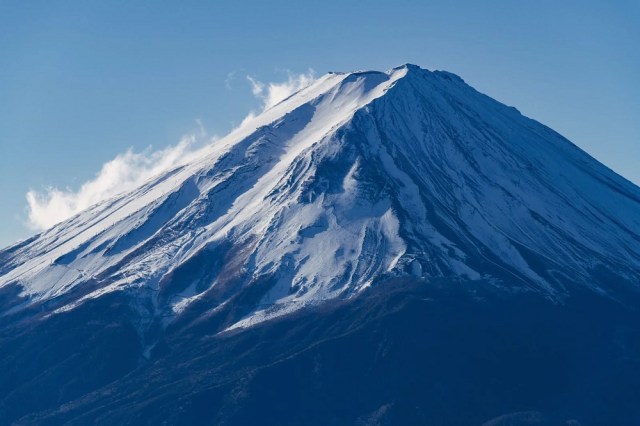Three dead bodies found near summit of Mt. Fuji

Search and rescue team goes looking for missing hiker, brings back three bodies.
It’s easy to make the mistake of thinking of Mt. Fuji as some sort of safe, sterilized theme park attraction. Viewed from afar, the symmetrical slopes appear gentle and inviting, and in addition to being the symbol of Japan, it’s one of the country’s most-visited tourism destinations. Every year it attracts thousands of visitors, many of whom aren’t particularly avid outdoorsy types otherwise but who feel secure and confident making the hike to the top thanks to ample, easily available information online about the route and the mountain hut infrastructure along the way.
But make no mistake, the trek to the summit of Mt. Fuji, and then back down, is dangerous enough that it can be deadly, especially if you attempt to climb it outside of the official climbing season, and a somber reminder of that came this week when a search and rescue team went looking for a 53-year-old man from Tokyo. Last Friday, the man told his family he was heading out to climb Mt. Fuji, and he apparently accomplished that goal, sending a photo he took from the summit sometime before noon on Saturday. That was the last they heard from him, though, and when he failed to return home, the family reported him as missing.
The man had been carrying a GPD beacon with him on his hike, and the last signals it had sent had come from near Mt. Fuji’s summit crater. Using that as a starting point, search teams scoured the area, and found not one but three dead bodies.
No official statement has been made regarding the age or sex of the deceased, but with no update from the family of the 53-year-old Tokyo man saying that he’s come home, it appears likely that he is one of the three.
Morbidly, one might wonder if the three were connected by some sort of suicide pact, but the circumstances suggest that the deaths were neither intentional nor connected. All three were determined to have died from cardiac arrest and were found in separate locations, though all near the summit.
The exact chain of events that lead to the deaths is still being investigated, but it’s a certainty that climbing outside of the official climbing season significantly increased the risks the hikers were taking. As hot and humid as Japan’s low-lying regions are right now, there’s still snow on parts of Mt. Fuji, especially at higher elevations, which can make movement difficult and exhausting. More than anything else, though, hiking outside of climbing season means fewer other people, including support service personnel, are on and around the mountain. Hikers who do slip and fall, collapse from exhaustion, or encounter other problems are unlikely to be spotted by passersby, and medical help will take longer to arrive. Carrying a beacon likely gave the 53-year-old Tokyo man a false sense of security, but in the end it appears to have done nothing more than help searchers find his body after he’d already died.
Climbing Mt. Fuji outside of the official climbing season is not technically illegal. However, “not illegal” and “not dangerous” are two very different things, and anyone interested in summiting Japan’s tallest mountain is strongly encouraged to wait until the start of the climbing season, which this year comes on July 1 for trails on the Yamanashi Prefecture side of Mt. Fuji and July 10 for those on the Shizuoka Prefecture side.
Source: Teleasa News via Yahoo! Japan News
Top image: Pakutaso
● Want to hear about SoraNews24’s latest articles as soon as they’re published? Follow us on Facebook and Twitter.
Credit:

0 comments: